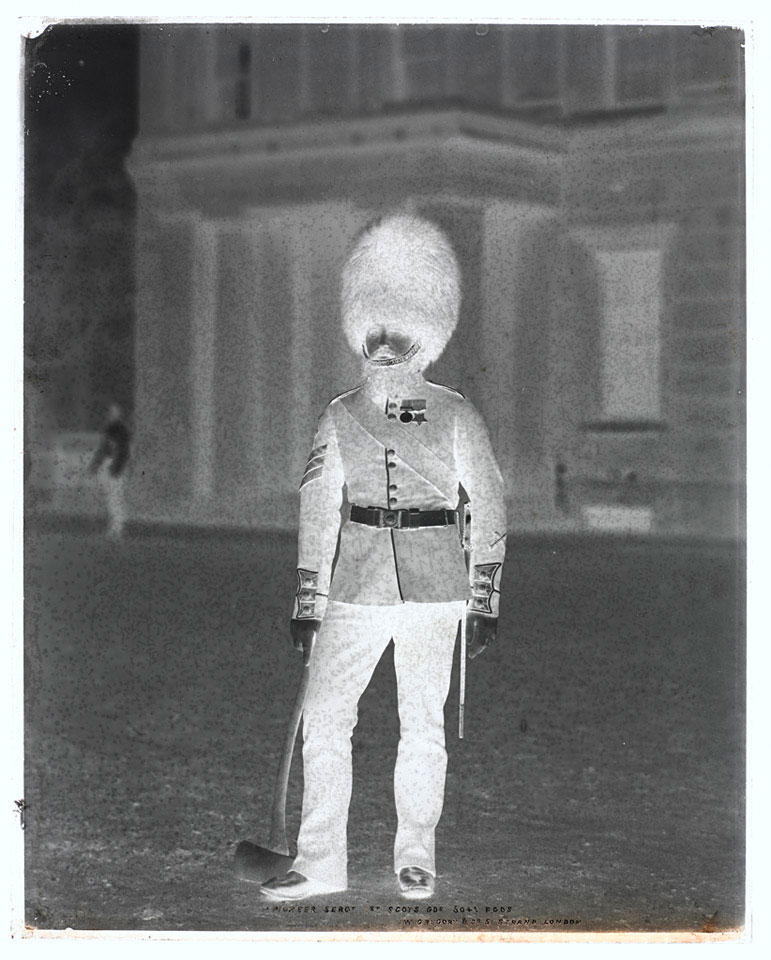
Online Collection
Pioneer Sergeant, 1st Battalion, Scots Guards, 1895 (c)
Glass negative, W Gregory and Company, 51 Strand, London, 1895 (c).
This image comes from a collection of glass plate negatives associated with William Gregory and Company. The negatives depict the British Army, including some members of the colonial forces, 'at home' in Britain during the 1890s.
As well as being intimate portraits of soldiers from this era, the images provide detailed illustrations of uniforms worn during the high point of military tailoring.
The pioneer sergeant is pictured wearing a scarlet single breasted tunic. The buttons of the tunic, grouped in threes, identify the regiment as the Scots Guards. The cuffs are round with a three buttoned slash. The collar, cuffs, and shoulder straps are piped white. Three chevrons on his upper right sleeve denote his rank, along with the crossed axes and rose showing his appointment as pioneer. On his lower left sleeve is the crossed muskets skill at arms badge. He also has the Egypt Medal (1882) and the Khedive's Star (1882-1891).
The blue cloth trousers have a scarlet stripe down the outside seams, worn over black boots. The pioneer is wearing a bearskin cap with metal chin chain. He has a white leather belt from which hangs his sawback sword. He wears white gloves and leans on an axe.
Pioneers were responsible for engineering and construction, as well as some blacksmithing tasks within regiments. Traditionally, pioneers would march ahead of their company and clear the path for those following behind with an axe. Their axes developed strong symbolic importance as a result. As well as an axe, pioneers would also carry shovels, billhooks, a sawback sword and a pickaxe. As a result of their duties, pioneers were traditionally the strongest and most imposing members of the company.
One of a collection of 280 glass negatives, associated with Gregory and Company, London, and F G O Stuart, 1892 (c)-1900.
NAM Accession Number
NAM. 1978-02-37-141
Copyright/Ownership
National Army Museum, Out of Copyright
Location
National Army Museum, Study collection
Object URL
https://collection.nam.ac.uk/detail.php?acc=1978-02-37-141


